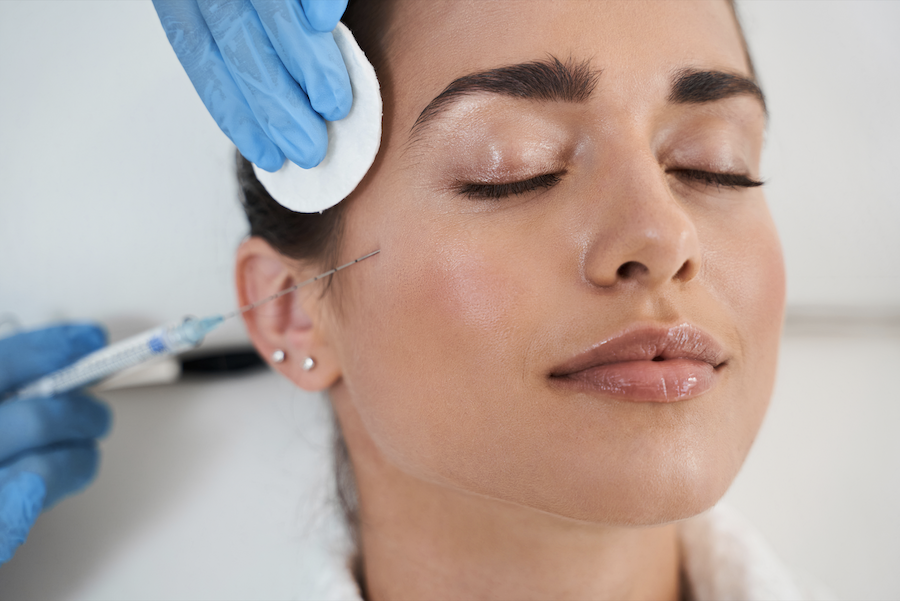
17 Jan Dermal Fillers Explained
Dermal fillers have evolved almost beyond recognition since I was trained in 2004. There are now countless brands, with a variety within each brand. Dermal fillers work by lifting, hydrating and plumping the skin. If you’re interested in learning more about one of the most popular aesthetics treatments available today, then read on.
Hyaluronic Acid Fillers
Injectable grade Hyaluronic acid or HA, is the most commonly used dermal filler used.
Hyaluronic acid is a natural substance found in your body and is an extremely hydrophilic (water loving/retaining) product, boasting an ability to hold more than 10 times its weight in water.
High concentrations of HA are found in soft connective tissues and in the fluid surrounding your eyes. It’s also in some cartilage and joint fluids, as well as skin tissue. If the term sounds familiar, it’s because the same substance is often injected into the aching joints of people with arthritis to ease pain and provide extra cushioning.
Dermal fillers are available in differing viscosities, to suit different areas of the face and to achieve different results. For example, a more dense filler, with slightly longer lasting abilities will offer a better projection, and so would suit for facial contouring of the cheeks or chins. Whereas you need a soft but resilient type filler for lips because they are so mobile.
Given that different manufacturers have different ways of producing different types of fillers it’s important not to mix different brands for at least 6 months. Also to note, toxin and fillers should not be done in the same area at the same time because of swelling post treatment. This is why a consultation is so important, as is building a relationship with your aesthetics practitioner; they can plan your treatments accordingly and will have full knowledge of any previous injectables you may have had.
Dermal Filler Areas
Dermal fillers are such a popular aesthetics treatment, as they are able to address so many concerns. They can be used for ‘first’ or fine lines (so anti-aging) through to more anatomical work, such as jawline, nose reshaping, lip and cheek enhancement or facial harmonising. Specialist areas like tear trough, nose, chin, forehead and brow reshaping are longer treatments which are therefore more expensive.
- Acne scars
- Cheek depressions
- Crow’s feet at the corner of your eyes
- Deep smile lines that run from the side of the nose to corners of the mouth (also known as nasolabial furrows)
- Frown lines between the eyebrows
- Marionette lines at the corners of the mouth
- Redefining lip border
- Scars including burns, acne and those caused by wounds
- Smoker’s lines; vertical lines on the mouth
- Some facial scars
- Worry lines that run across your forehead
Hydrating Fillers
As mentioned, we have dermal fillers with unique properties based upon their composition, but we also now have a new innovation of hydrating fillers, with brands such a Profhilo. These fillers are also HA based, but act in a different way, dubbed an “injectable moisturise” when injected in the upper layers. They spread hydration throughout the skin, creating a plump and youthful effect.
Permanent Fillers
Dermal fillers is also a blanket term to include some of the more permanent injectable filling treatments. There are few fillers known for being ‘permanent’ such as calcium hydroxylapatite and poly-L-lactic acid that cannot be dissolved if things go wrong.
There are also permanent silicone injections, which cannot be reversed, such as the infamous lip injections Leslie Ash has had, which unfortunately are still very noticeable.
Dermal Fillers 101
When will you see results from Dermal Fillers?
Results are evident immediately, but it will take a short time for any swelling to go down and to settle. A few activities need to be avoided afterwards, as well as touching the area to reduce infection risk.
What are the side effects of Dermal Fillers?
Common, short-term side-effects after dermal fillers include swelling, bruising and tenderness.
What will happen during my appointment?
Prior to any dermal fillers you will be taken through a full consultation, where we explain fully what the treatment will entail and what realistic results can be expected.
The area will be numbed using a cream, which will make the treatment more comfortable.
Dissolving Fillers
If an area is compromised, or for any reason filler needs to be dissolved we use a substance called Hylase
How long do Dermal Fillers last?
HA dermal fillers last on average between 6-12 months, depending on the type used. I’m not an advocate of fillers which last much longer than that because what suits you now may not be suitable for you in 5 or 10 yrs time.


